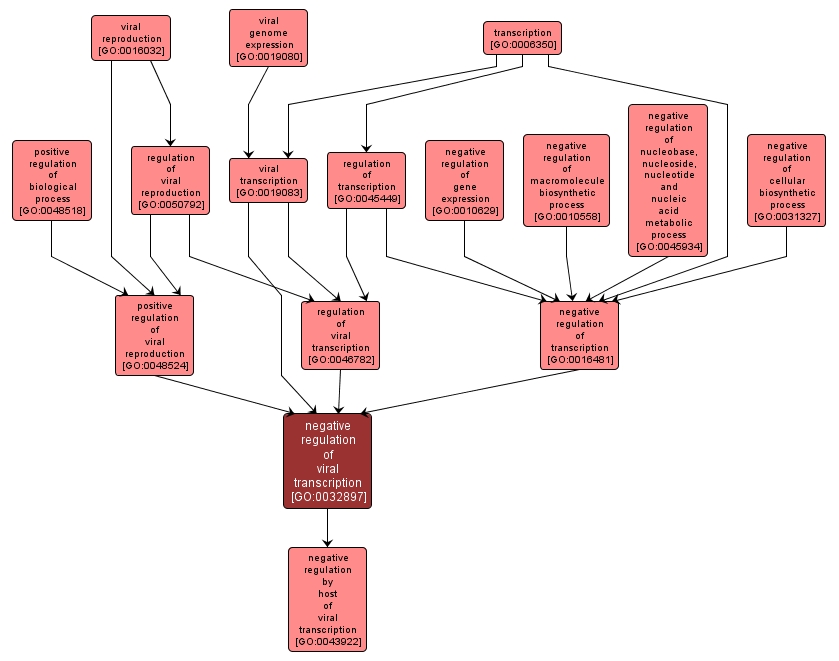GO TERM SUMMARY
|
| Name: |
negative regulation of viral transcription |
| Acc: |
GO:0032897 |
| Aspect: |
Biological Process |
| Desc: |
Any process that stops, prevents or reduces the frequency, rate or extent of viral transcription. |
Synonyms:
- downregulation of viral transcription
- down regulation of viral transcription
- down-regulation of viral transcription
- inhibition of viral transcription
|
|

|
INTERACTIVE GO GRAPH
|














